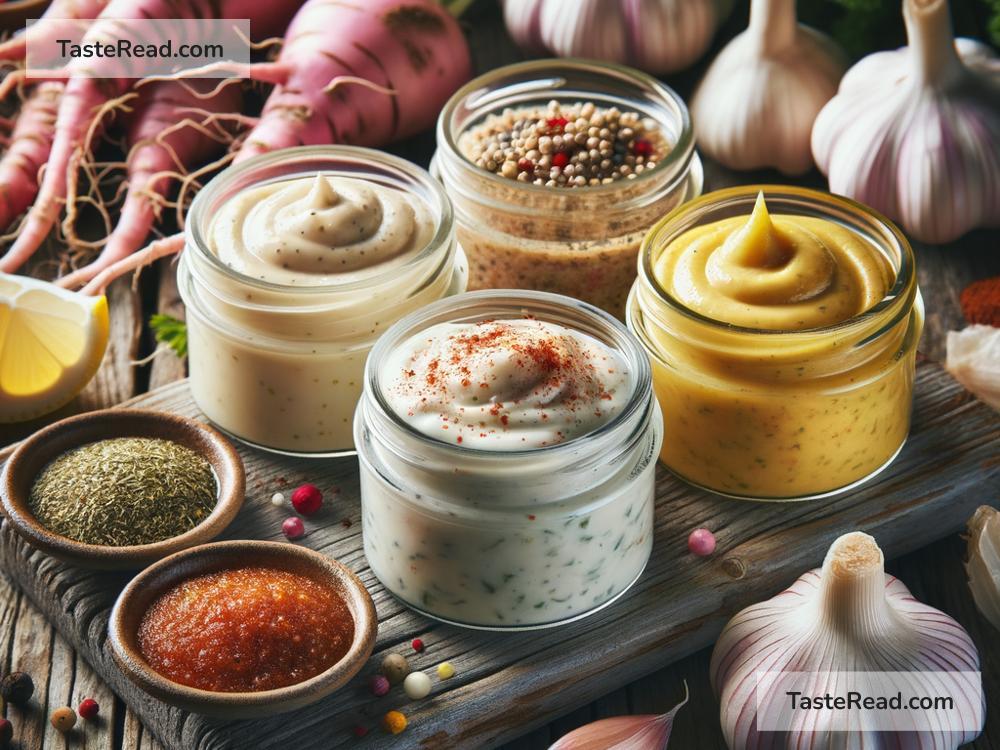The Curious Uses of Horseradish in Condiments
Horseradish is quite an intriguing plant. For centuries, people have used it in cooking, medicine, and even folklore. But one of its most fascinating uses is as an ingredient in condiments. This spicy root has earned a special place in kitchens worldwide for its unique flavor and ability to add a bold kick to dishes.
In this blog, we’ll explore how horseradish finds its way into some of our favorite condiments, the history behind its use, and why it remains a popular choice today. Whether you’re a fan of its fiery taste or new to this zesty root, you’ll appreciate how horseradish transforms everyday foods into extraordinary experiences.
What Is Horseradish?
Horseradish is a root vegetable in the Brassicaceae family, which includes mustard, cabbage, and broccoli. But unlike its mild relatives, horseradish is known for its intense heat and pungency. When grated or crushed, the root releases compounds called allyl isothiocyanates—that’s a fancy term for the stuff that makes it taste hot and sharp. Interestingly, horseradish isn’t naturally spicy until you break it open. Once exposed to air, the spicy compounds become active, making your eyes water and nose tingle.
Horseradish’s Journey into Condiments
Horseradish has been used as a condiment ingredient for over 3,000 years. It’s believed to have originated in Eastern Europe, where it was first cultivated for its medicinal properties. Eventually, people realized that it also added incredible flavor to food. By the Middle Ages, it became a staple ingredient across Europe.
This fiery root found its way into sauces, dips, spreads, and dressings. Its sharp taste pairs well with fatty and rich foods like meat, seafood, and cheese, balancing their flavors and leaving your taste buds craving more. Today, horseradish is a core component in condiments worldwide—from creamy sauces to tangy mustards.
Horseradish and Its Famous Condiments
Some condiments simply wouldn’t be the same without horseradish. Here are a few of the most popular ones:
1. Prepared Horseradish
Prepared horseradish is the simplest condiment made from the root. It’s grated and mixed with vinegar, salt, and sometimes sugar to preserve its freshness and tone down the heat. People use it as a standalone side or to enhance other dishes like roast beef, steak, or salmon. The tanginess of the vinegar complements the sharpness of the horseradish, creating a robust condiment.
2. Horseradish Sauce
Horseradish sauce is perfect for people who want a creamier option. This velvety sauce is made by blending horseradish with sour cream, mayonnaise, or heavy cream. The mild creaminess balances the spicy heat, making it a favorite for topping sandwiches, burgers, or baked potatoes. In the UK, horseradish sauce is a traditional accompaniment to roast beef at Sunday dinners.
3. Cocktail Sauce
Seafood lovers know cocktail sauce wouldn’t be the same without horseradish. The classic recipe combines tomato ketchup, lemon juice, Worcestershire sauce, and a generous scoop of horseradish. The result is a tangy, spicy condiment that pairs beautifully with shrimp, oysters, and fried fish.
4. Mustard with Horseradish
Horseradish is frequently added to mustard to boost its sharpness and complexity. The combination creates a condiment that’s bold and zesty—perfect for serving with sausages, hot dogs, or pretzels. In Germany, horseradish-mustard mixtures are particularly popular for enhancing pork dishes.
5. Wasabi
Here’s a surprising fact: most of the “wasabi” you’ve eaten at sushi restaurants isn’t actual wasabi. Real wasabi is rare and expensive to grow, so horseradish is often used as a substitute because of its similar heat and flavor profile. This imitation wasabi is made by mixing powdered horseradish with food coloring and mustard.
Why Do People Love Horseradish in Condiments?
Horseradish adds more than just heat; it delivers a punch of freshness and boldness that can completely transform a dish. Here are a few reasons why it remains so popular:
- Enhanced Flavor: Horseradish adds bite and tang, making savory dishes more exciting and balanced.
- Versatility: Its unique profile works well in many recipes, from sauces and dips to spreads and dressings.
- Appetite Appeal: A touch of horseradish gives condiments a distinctive flair that wakes up the palate, perfect for pairing with rich or fatty foods.
- Cultural Tradition: Horseradish plays an important role in traditional cuisines. For example, in Jewish culture, horseradish is used during Passover to represent the bitterness of slavery.
Fun Facts About Horseradish
- Farmers harvest horseradish roots in cooler months, typically late fall or early winter, when its flavor is strongest.
- Horseradish roots can grow up to 2 feet long!
- The heat from horseradish is felt more in your nose than on your tongue due to the volatile compounds it releases.
- Ancient Greeks used horseradish for medicinal purposes, believing it could cure ailments like back pain.
Conclusion
Horseradish might not be the first thing you think of when it comes to condiments, but its spicy, tangy kick has earned it a devoted following. From sauces to spreads, this humble root adds a bold flavor that transforms everyday dishes into memorable meals.
So, the next time you enjoy cocktail sauce with shrimp or a dollop of horseradish mustard on your sandwich, remember that you’re experiencing a centuries-old tradition of culinary creativity. Horseradish may be an acquired taste, but once you learn to love it, it’s hard to imagine life without its fiery charm!


